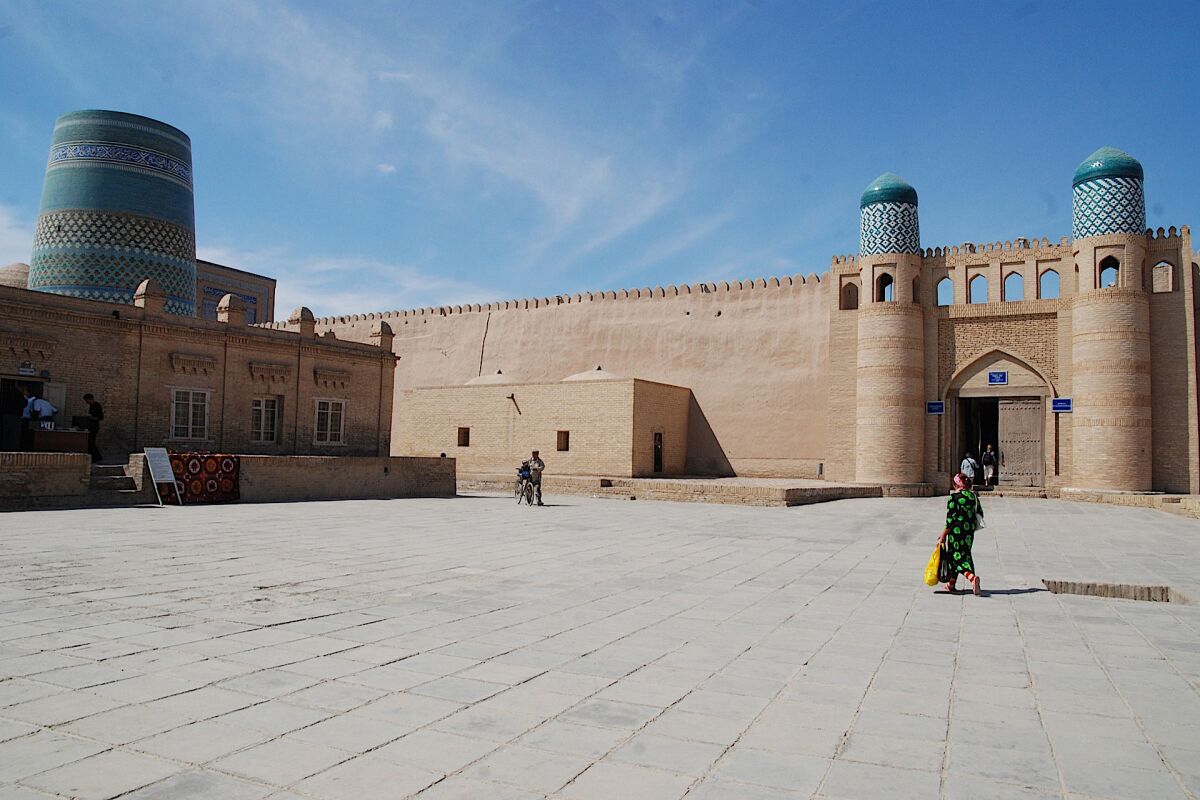Khiva - Garden in Dishan Kala
The Garden in Dishan-Kala in the historical city of Khiva consists of several separate courtyards with high mud walls, a reception room, a recreation courtyard, a harem and other services in the middle of the garden plantations.
The garden had all kinds of grapes, apples, pears, plums, figs, pomegranates, peaches, etc.

The garden was divided into male and female halves and both had havuze (water basins) on whose banks were pergolas and terraces – aiwans. The banks of the havuze, the courtyards, the edges of the gardens and all the paths to them from the city of Khiva were planted with shady hujschumen (spherical elms).
Around this garden were also the gardens of the heirs to the throne and various officials of the khanate. Similar gardens of the feudal nobles of Khiva were scattered in all the nearer suburbs of the city. These gardens were mainly created under Allakuli-Khan.
At the beginning of the XX century, the Nurullabay Garden in Dishan-Kala occupied a central place in the administrative and political life of the city of Khiva. The diwans (administration), the guardhouse and the harem* of Isfandiyar-khan were located there. In the area of this garden, behind the wall of Dishan-Kala, the centre of a new cultural life of Khiva began to emerge.
With the Russian invasion of Central Asia and with the following October Revolution, many buildings and gardens in Ichan-Kala and Dishan-Kala were destroyed.
*Harem (Arabic: حريم ḥarīm, “a sacred inviolable place; harem; female members of the family”) properly refers to domestic spaces that are reserved for the women of the house in a Muslim family. This private space has been traditionally understood as serving the purposes of maintaining the modesty, privilege, and protection of women. A harem may house a man’s wife or wives, their pre-pubescent male children, unmarried daughters, female domestic workers, and other unmarried female relatives. In royal harems of the past, concubines of the prince were also housed in the harem (Source: Wikipedia).
